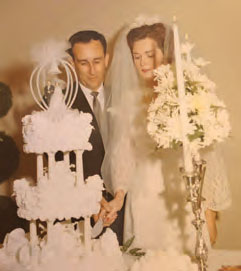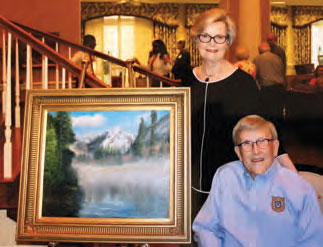
When I ask, “Would you like to Exercise today?”, occasionally I hear a negative answer: “I used to exercise but now I can’t.“ That may mean I can’t run a mile anymore or swim laps or play tennis or 18 holes of golf. But everyone can exercise in some way. Many exercises can be done sitting in a chair or standing beside a sturdy chair or kitchen counter or even laying on the bed. To get started, all it takes is a “CAN DO“ attitude.
An article, Obtaining a “Can Do” Attitude By Celeste Stewart from lifescript.com reports: “A “can do” attitude is a conviction that shows the world that whatever needs to be done, can and will get done. Unfortunately, many people have a tendency to focus on what can’t be done rather than what can be done.
Developing a “can do” attitude requires shifting focus from “I can’t” to “I can.” Pay attention to what you are saying and hearing. How much of that is negative? How can you reword it to make it positive? If someone is complaining all the time, try to shift the conversation.
Take responsibility. When facing an obstacle, are you quick to blame other people or circumstances? Instead of placing blame, take responsibility for the challenge and work to overcome it.
Take action and follow through. Procrastination will bog you down so don’t fall into the trap of putting off your tasks. Set your mind to doing something and then do it. Keep going until you reach your goals. If you must take it a small step at a time, that’s fine – as long as you are taking those steps.
Take the positive direction. Surround yourself with other positive people. Energy, both positive and negative, is infectious. Aligning yourself with other can-doers will bring out the best in you.
Adopting a “can do” attitude can change your life. With the right attitude, your health can improve. Whatever your goal is, applying the “can do” spirit will help you reach it. No one says it’s going to be easy. In fact, it takes determination, confidence, and initiative. In addition, this new attitude requires a whole new way of thinking. This positive approach will pay off as you become more self-confident and accomplish your goals.
Joining one of our many exercise classes offered will put you into company with many “CAN-DOERS” who encourage each other to do what they can to get stronger and stay fit. Start small and work up gradually. If you have been out of the exercise habit for a while, start with 15 minutes of easy to moderate exercise and add 5 minutes a week to your schedule. After a month you will be up to 30 minutes which is the recommendation of CDC. 30 minutes – 5 days per week add up to 150 minutes of exercise which has been recommended by The Arthritis Foundation. Yoga stretch and Tai Chi are two classes that are good for beginners (they can be done seated if necessary.) Walking our hallways is always a good place to start. Mary Hand will be glad to help you in the Oasis and encourage you in whatever exercise plan you want to begin.
Remember the scripture, “I CAN DO all things through Christ who strengthens me. Philippians 4:13. And don’t forget the children’s book The Little Engine That Could who told himself, “I think I CAN…I think I CAN…I think I CAN……”
So get that “CAN DO” Attitude and get your exercise program started. Take the challenge and see what you CAN DO.








 Financially, career-wise, relational and in many other areas we can easily drop the ball. It’s also true in the spiritual realm. Look at the story in Matthew 22:35-40, “Then one of them, a lawyer, asked Him a question, testing Him, and saying, ‘Teacher, which is the greatest commandment in the law.’ Jesus said to him, ‘You shall love the Lord your God with all your heart, with all your soul, and with all your mind. This is the first and great commandment. And the second is like it. You shall love your neighbor as yourself. On these two commandments hang all the Law and the Prophets.’” Jesus was paraphrasing the words from the Jewish Torah. When we consider His challenge it must be evident that we all have dropped the ball.
Financially, career-wise, relational and in many other areas we can easily drop the ball. It’s also true in the spiritual realm. Look at the story in Matthew 22:35-40, “Then one of them, a lawyer, asked Him a question, testing Him, and saying, ‘Teacher, which is the greatest commandment in the law.’ Jesus said to him, ‘You shall love the Lord your God with all your heart, with all your soul, and with all your mind. This is the first and great commandment. And the second is like it. You shall love your neighbor as yourself. On these two commandments hang all the Law and the Prophets.’” Jesus was paraphrasing the words from the Jewish Torah. When we consider His challenge it must be evident that we all have dropped the ball.




 Here are a couple ways to keep your mind and body active.
Here are a couple ways to keep your mind and body active.  Eat well
Eat well Keep learning
Keep learning

 © 2025 Kirby Pines LifeCare Community. All Rights Reserved |
© 2025 Kirby Pines LifeCare Community. All Rights Reserved | 